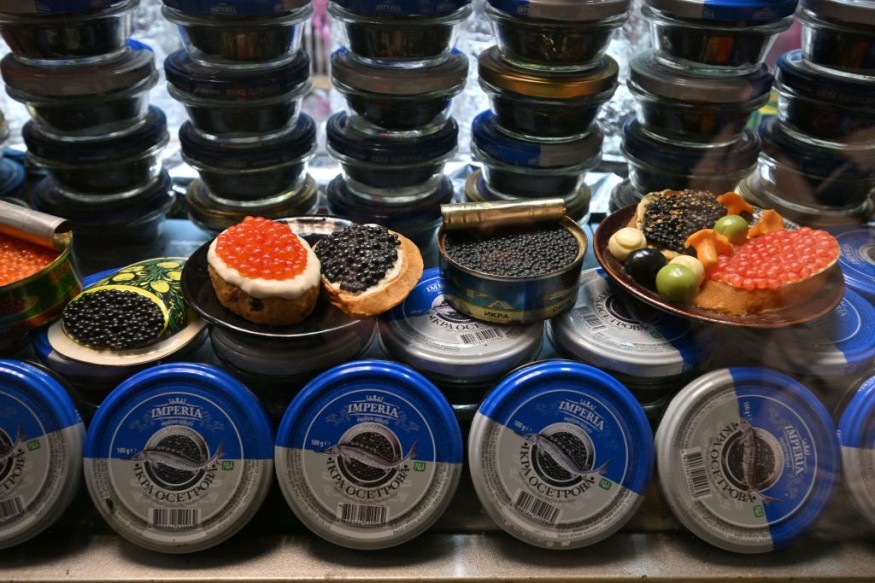Some animal substances top as the most expensive in the world. Animals have played a crucial role in the development of humans, whether it be through animal secretions or even just as common as milk.
Although they are frequently used as food, they have advanced human culture and society in countless other ways. Not only as companions, but also for protection, war, agriculture, and medicine. It makes sense that some animal products would sell for more money. It might be due to a lack of resources or a challenging harvest. Here are a few of the world's most expensive animal substances.

1. Scorpion Venom - $39 Million / Gallon
It would take 2.64 million scorpions to produce a gallon of venom, given that only 2 milligrams of venom can be extracted per scorpion. Potential applications for scorpion venom in medicine exist. The venom's ingredients have the potential to aid in the treatment of malaria, bone diseases, and several cancers. It is being researched as an antibacterial and painkiller. Numerous applications are being researched, and the potential future advantages are enormous.
2. Horseshoe Crab Blood - $60,000 / Gallon
LAL, or Limulus amebocyte lysate, is created using horseshoe crab blood. LAL is very helpful in the production of vaccines and other treatments because of how the horseshoe crab's blue blood clots. LAL has the ability to find specific bacteria in a vaccine. With just one drop in a sample and a potentially harmful bacterium like E. coli is surrounded by a gelatinous barrier. Although blood harvesting results in a large number of crab deaths, many lives are also saved.
3. Ambergris - $130,000 / Kilogram
Ambergris, a greasy and soft sperm whale excrement, is a valued component of perfumes. Nowadays, ambergris washes up on the shore until someone finds it. However, sperm whales used to be hunted just for it.
Because ambergris is made of feces, it smells awful when it first appears. This develops a softer, sweeter scent over time. Then it can be blended with other ingredients to create drinks, medicine, and even perfume.
4. Almas Caviar - $25,000 / Kilogram
Almas caviar is the most expensive caviar available. It comes from a Caspian Sea sturgeon that is remarkably rare and endangered. The eggs of these albino beluga sturgeons are only harvested from 100-year-old fish because age makes the caviar smoother and tastier.
5. Anti-Venom - $200 to $4,000 / Vial
There is no all-purpose antivenom, and each anti-venom must be customized for the specific snake that attacked and bit the victim. The likelihood is that one vial will not be sufficient.
In Illinois, nine-year-old Oakley Yoder was bitten by a snake. The hospital charged $67,957 for four vials of anti-venom to treat the bite on her toe, NPR says.
6. Seagull Poop - $12.2 Million / 27,000 Tons
Natural fertilizer made from seagull guano is highly beneficial and nutrient-rich. According to Massive Science, guano harvesters in Peru and Chile earned $12.2 million from 27,000 tons of seagull waste in 2018.
In addition to being used as fertilizer, it contributes to the ecosystem and is beneficial to nature.
7. Ivory - $1,500 / Pound or Around $500,000 / Elephant
The majority of the ivory that is currently in use is not antique ivory that is being sold again. Fresh kills are driven by cost. It has no intrinsic value, but ivory is highly prized because of its cultural uses, according to the Smithsonian Magazine. It is used as a status symbol, promotion of economic power, and for art.
8. Cone Snail Venom - $924 Million / Kilogram
Cone snail venom is also extremely valuable because of the myriad compounds it contains. For a long time, scientists have studied this venom with the hope of one day using it to create painkillers as well as other medications. Already from it, 1000 times more potent painkillers than morphine have been produced.
A kilogram of the lethal cone snail venom needs thousands of snails to be harvested.
Also Read : Author Proposes Melting, Towing Icebergs for Water Supply, Like Norway's $185 Bottle of Luxury Iceberg Water
9. Pearls - $300 to $1,500 / Piece or up to $11.8 Million / Set
To shield their interiors from pollution, oysters and several other types of mollusks produce pearls within the fleshy part of their shells. Although a mollusk can produce pearls in a variety of shapes, the round ones, the perfect ones, are the most expensive.
Either freshwater or saltwater can be used to harvest pearls. They can be wild or domesticated, though wild ones usually fetch more money.
For example, dark Tahitian pearls can fetch up to $25,000 in price but the price of a South Seas pearl can reach $100,000. According to BBC Culture, Liz Taylor once owned a necklace made of pearls that included the La Pelegrina pearl, which later sold for $11.8 million.
10. Musk - $45,000 / Kilogram
Musk deer create musk in a gland that contains the active ingredient muscone to entice females. It yields a distinctive fragrance following dilution and a chemical reaction. Traditional Chinese medicine still uses real musk. Since a single gland can only produce about 28 grams, several deer must pass away for this to occur. Because of this, synthetic musk has largely replaced natural musk, but the industry hasn't completely disappeared, TopTenz reports.
© 2025 NatureWorldNews.com All rights reserved. Do not reproduce without permission.





